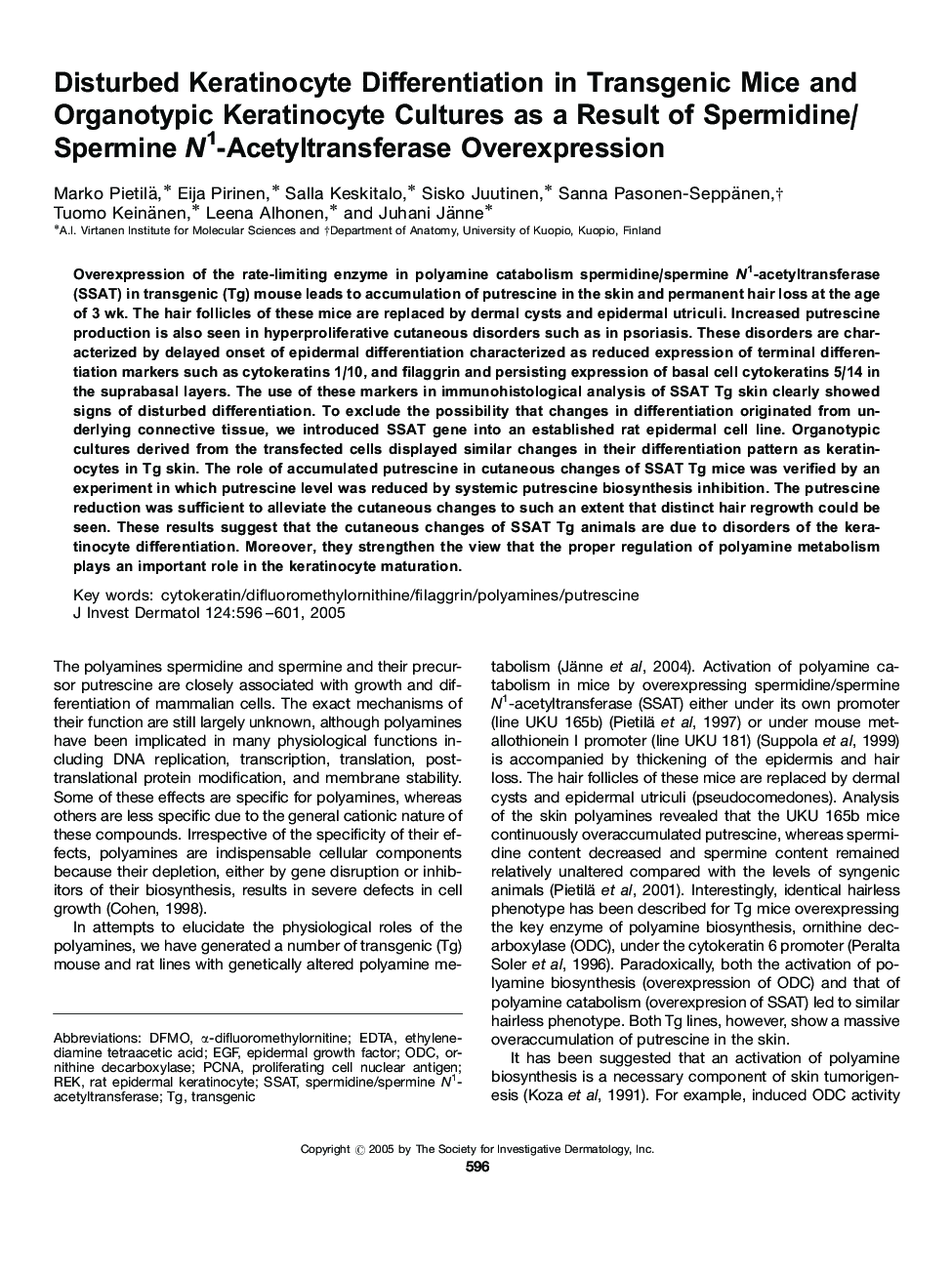| Article ID | Journal | Published Year | Pages | File Type |
|---|---|---|---|---|
| 9230316 | Journal of Investigative Dermatology | 2005 | 6 Pages |
Abstract
Overexpression of the rate-limiting enzyme in polyamine catabolism spermidine/spermine N1-acetyltransferase (SSAT) in transgenic (Tg) mouse leads to accumulation of putrescine in the skin and permanent hair loss at the age of 3 wk. The hair follicles of these mice are replaced by dermal cysts and epidermal utriculi. Increased putrescine production is also seen in hyperproliferative cutaneous disorders such as in psoriasis. These disorders are characterized by delayed onset of epidermal differentiation characterized as reduced expression of terminal differentiation markers such as cytokeratins 1/10, and filaggrin and persisting expression of basal cell cytokeratins 5/14 in the suprabasal layers. The use of these markers in immunohistological analysis of SSAT Tg skin clearly showed signs of disturbed differentiation. To exclude the possibility that changes in differentiation originated from underlying connective tissue, we introduced SSAT gene into an established rat epidermal cell line. Organotypic cultures derived from the transfected cells displayed similar changes in their differentiation pattern as keratinocytes in Tg skin. The role of accumulated putrescine in cutaneous changes of SSAT Tg mice was verified by an experiment in which putrescine level was reduced by systemic putrescine biosynthesis inhibition. The putrescine reduction was sufficient to alleviate the cutaneous changes to such an extent that distinct hair regrowth could be seen. These results suggest that the cutaneous changes of SSAT Tg animals are due to disorders of the keratinocyte differentiation. Moreover, they strengthen the view that the proper regulation of polyamine metabolism plays an important role in the keratinocyte maturation.
Related Topics
Health Sciences
Medicine and Dentistry
Dermatology
Authors
Marko Pietilä, Eija Pirinen, Salla Keskitalo, Sisko Juutinen, Sanna Pasonen-Seppänen, Tuomo Keinänen, Leena Alhonen, Juhani Jänne,
